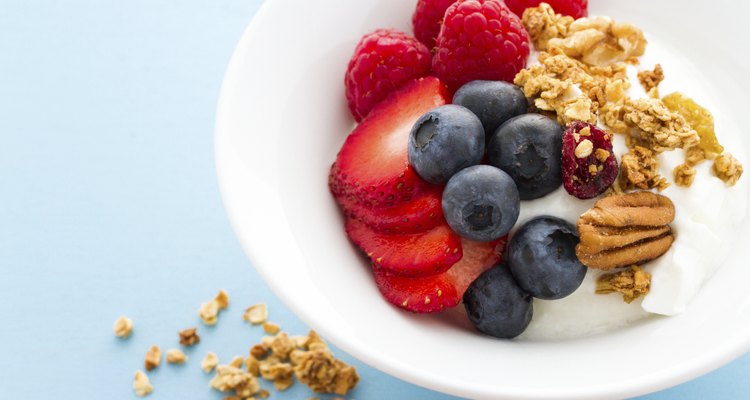
arinahabich/iStock/Getty Images
It used to be that shopping for yogurt was a matter of choosing a flavor and container size. Greek-style yogurt companies have made a name for their product by touting protein-content, too. According to the U.S. Department of Agriculture's National Nutrient Database, a 6-ounce container of regular yogurt has a mere 8.9 grams of protein compared to the 17.3 grams found in the same serving of Greek yogurt.
Manufacturing Process
The manufacture of regular and Greek yogurt begins with the same process. Milk is heated and seeded with live, active cultures, including Lactobacillus bulgaricus and Streptococcus thermophilus. The bacterial cultures transform the milk into yogurt in a process called fermentation.
The Difference
The reason Greek yogurt has a higher protein content is that it is a much more concentrated product. After the milk has fermented, manufacturers strain the yogurt extensively to remove liquids. The end result is much thicker and more protein-dense than regular yogurt.
Related Articles
Does Sour Cream Go Bad if Unopened?
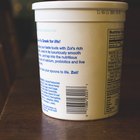
How to Freeze Greek Yogurt

The Amount of Lactose in Yogurt

How Can I Tell If Yogurt Has Curdled?
Nutrition Information for Onken Yogurt

How to Freeze Goat's Milk

How to Ferment Milk

How to Freeze Kefir

How to Freeze Tzatziki
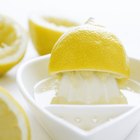
How Do I Curdle Soy Milk With Lemon ...

Can You Substitute Yogurt for ...

How to Purchase Milk Crates

Greek Yogurt as a Replacement for Sour ...
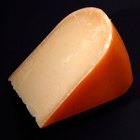
What Is Animal Rennet?

Ingredients of Axe Body Wash

What Is Balkan Yogurt?

What Happens if You Whip Condensed Milk?
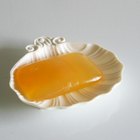
Recipe for How to Make Glycerin Soap ...
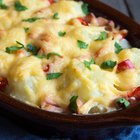
Calories in Pimento Cheese
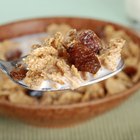
Calories in a Bowl of Raisin Bran Cereal
References
Writer Bio
Carolyn Robbins began writing in 2006. Her work appears on various websites and covers various topics including neuroscience, physiology, nutrition and fitness. Robbins graduated with a bachelor of science degree in biology and theology from Saint Vincent College.
Photo Credits
arinahabich/iStock/Getty Images